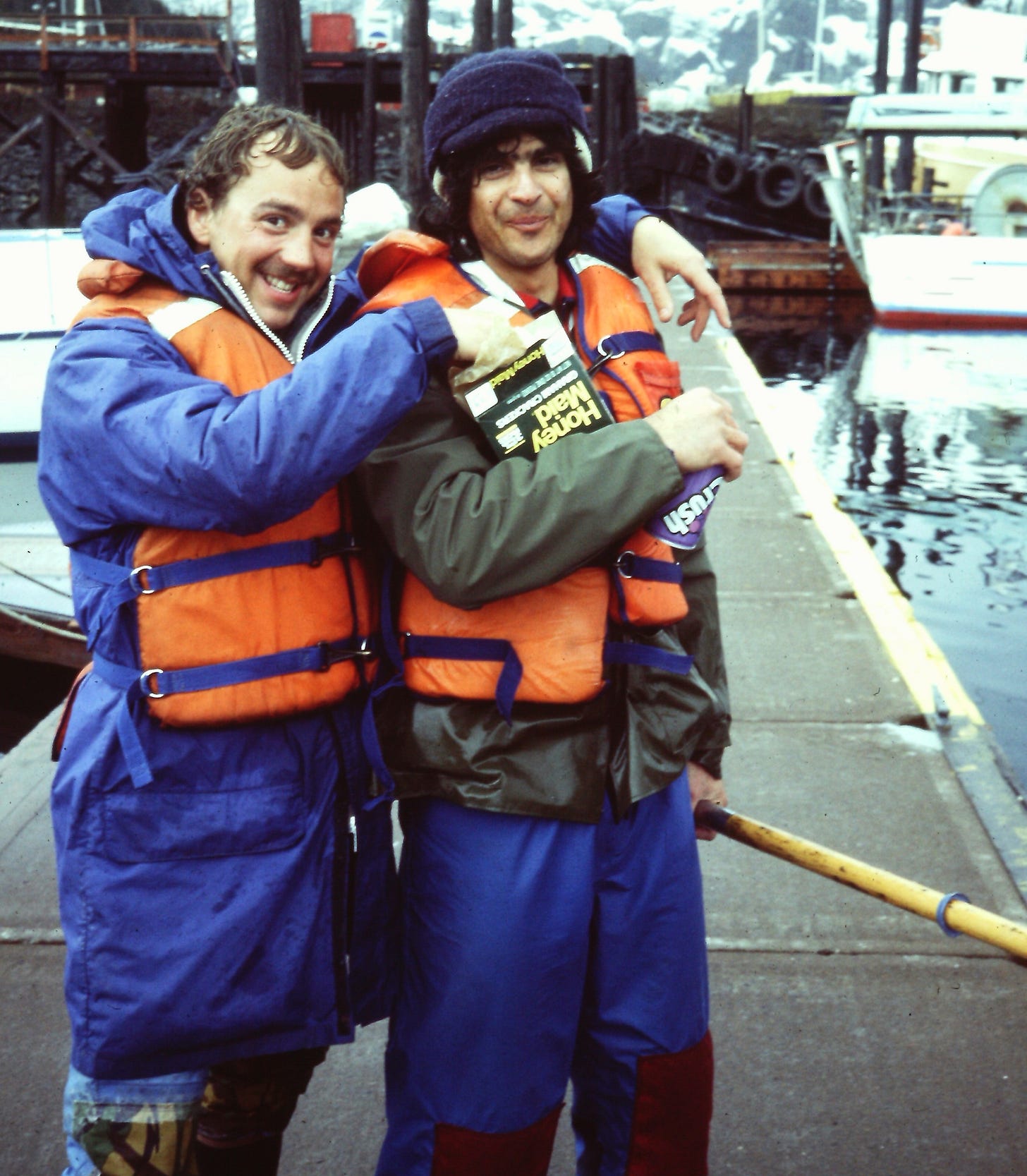Alaska: What Happened Next
My Tom's Expanding Head Band diary is a cliff hanger. Here's the rest. Caveat: climbing stories should never have one narrator. Everyone remembers them differently.
As Dave and I descended the SE Ridge, a surprising reversal of roles occurred. After struggling to keep up with him all week on the uphill, it turned out I was much faster descending. Was this a downhill skier skill perhaps? In any event I was able to ‘run’ (“plunge-step”) 7000’ down to the Kahiltna glacier and ski across to the airfield in a matter of hours. I was also traveling light, having left any non-essential gear at the high camp with Tom and Geoff. And of course as I descended there was more and more oxygen (just what Geoff needed).
We had come to the Alaska Range early. The peak climbing season for Denali is generally from mid‑May to mid‑June. Hence we experienced unconsolidated snow, avalanche conditions, cold, wind et cetera. Bear in mind that the Alaska Range is widely regarded as the coldest mountain range in the world. I believe we were there in April because Geoff had a holiday break, which means our expedition was literally “somebody’s idea of a spring vacation”. So, there weren’t many people at the airstrip — thankfully the radio operator was one of them. (Pro Tip: most teams even in 1984 carried a radio with them.) I told them all, with no idea what would happen next.
What happened first of course were hours of anxious waiting — waiting and wondering, will more weather come in, is it even possible to pluck someone from such a spot? We must have been on the radio with people. I believe it was the following morning (41 years ago as I write) that we saw Doug Geeting’s plane leading a helicopter toward Mt. Foraker. The entire SE Ridge of Foraker including the location of our snow cave were visible from the airstrip. Hearts in mouths, we watched the chopper fly to exactly the right spot on the ridge — and disappear. Gasp. Then it reappeared, hovering momentarily, before pulling away. Seemingly never stopping, as if, this is just too hard.
Tom of course had a much better view of what happened, on that ridge where the wind probably never stops blowing. The pilot flew overhead and then executed a ‘practice landing’ in the air just west of the ridge (thus disappearing from our sight at the basecamp). Then he came back up and set one of his skids on the tiny platform Tom had managed to stomp out on the ridge. With Tom pushing and rescuers pulling, Geoff was halfway through the door when the chopper lifted off. An hour later he was in the hospital in Anchorage.
Tom was now alone on Foraker. Did we see him occasionally, a black dot descending the ridge? I think so. Did I ski over to the base, maybe more than once, hoping to meet him? I hope so. What I do know is it took him days to descend — 3 maybe more? We should have gone back up there to help. It was wishful thinking that he would dump anything he didn’t need and come down fast and light. No, Tom is the kind of that person that carries everything down — two packs, rope, food, fuel, etc. A huge load even for a true stoic.
It was around this time that two Alaska Airlines employees got avalanched off Mt. Frances, a nearby ‘baby peak’ — only 3000’ above the airstrip. Dave and I rushed over there immediately and found one of them, injured, at the bottom. His partner was nowhere in sight, so Dave blasted up the couloir looking for him. I chopped the basket off my ski pole with my ice axe and began using it to probe the debris. Soon, Dave returned with the other fellow who had decided to hide behind a rock until help came. So it was rescues all around! (The gents made a dinner for us at their house on our way back to Anchorage.)
In the face of so many avalanches and near-death experiences, I pretty much decided a wise person would get the hell out of the Alaska Range. So when Dave asked if I would consider climbing the Cassin Ridge on Denali with him, I did not in retrospect respond appropriately. I may have said “are you out of your mind?” The Cassin Ridge is a magnificent, revered route — which Dave came intending to solo. But he was now asking me if I wanted to do it with him. This was a high compliment and I should have honored it more than I did.
In spite of taking a pass on the Cassin, I was surprised to find back in Talkeetna that I had a touch of notoriety — when ‘making the rounds’ I was treated with … was it deference? This was hard to understand, having landed feeling a bit chagrinned at calling for a rescue. Perhaps my jog down Foraker, followed by my search for the avalanche victim (both admirable but not heroic) had been conflated in the retelling into something more. Of course I enjoyed this and did nothing to dissuade anyone from buying me a beer!
Numerous adventures were had in Alaska after departing the Alaska Range. Tom’s Expanding Head Band went sea kayaking in Prince William sound. I hitchhiked to the remote home of an Alaskan I met in Anchorage where I ate moose burgers and steered a squirrelly jeep being towed up a narrow winding mountain road — the most terrifying moments of the entire trip for me! Fodder for future postings.




Great to read this and the part one today. Newfound appreciation for how these expeditions are a constant ebb and flow of progress made, progress ceded.
Very exciting (as usual)!
Such high adventure!